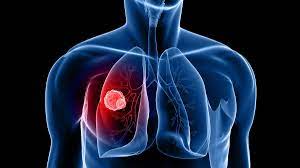One of the most common and fatal types of cancer in the world today is lung cancer. While smoking is a well-known risk factor, exposure to certain chemicals can also significantly increase the likelihood of developing this disease. Among these chemicals are acrolein, diacetyl, and diethylene glycol.
Acrolein: The Stealthy Threat
Acrolein is a highly reactive and toxic compound found in cigarette smoke and industrial emissions. It’s known for its irritating properties, causing damage to the respiratory system. Long-term exposure to acrolein has been linked to an increased risk of lung cancer, making it a concerning environmental hazard.
Diacetyl: The Flavoring Agent with a Dark Side
Diacetyl, commonly used as a flavoring agent in food products, particularly in buttery flavours, poses a significant health risk to workers in industries like popcorn manufacturing and flavouring production. Inhalation of diacetyl vapours has been associated with bronchiolitis obliterans, a severe lung condition, and potentially lung cancer.
Diethylene Glycol: The Hazardous Chemical
Occupational Exposure Risks
Workers in specific industries, such as manufacturing, chemical processing, and food production, face a heightened risk of exposure to these carcinogenic chemicals. Poor ventilation and inadequate safety measures in these workplaces can exacerbate the danger, increasing the likelihood of respiratory ailments and cancer among employees.
Environmental Concerns
Beyond occupational hazards, the general population is also at risk of exposure to acrolein, diacetyl, and diethylene glycol through environmental contamination. Industrial emissions, tobacco smoke, and consumer products contribute to the dispersion of these harmful chemicals into the air, posing a threat to public health.
Regulatory Measures and Advocacy
Importance of Awareness and Prevention
Increasing awareness among the general population about acrolein, diacetyl, and diethylene glycol hazards is essential for prevention. Education campaigns stress avoiding exposure to these chemicals. Advocacy for safer alternatives can cut lung cancer and respiratory disease rates.
Research and Innovation
Ongoing research on acrolein, diacetyl, and diethylene glycol is vital for understanding their health effects. It helps develop preventive measures. Innovations in workplace safety and using less toxic alternatives can further reduce risks.

